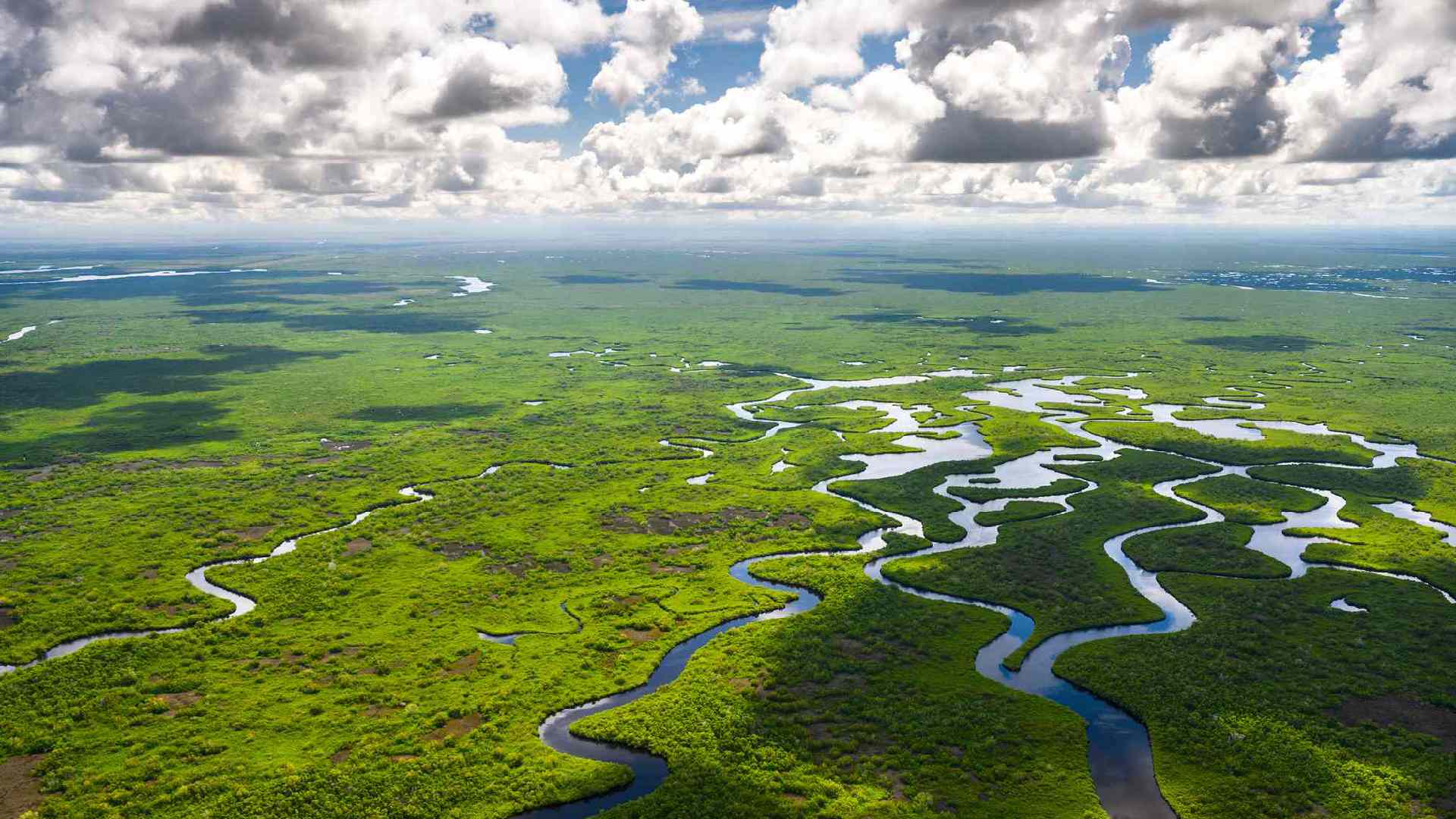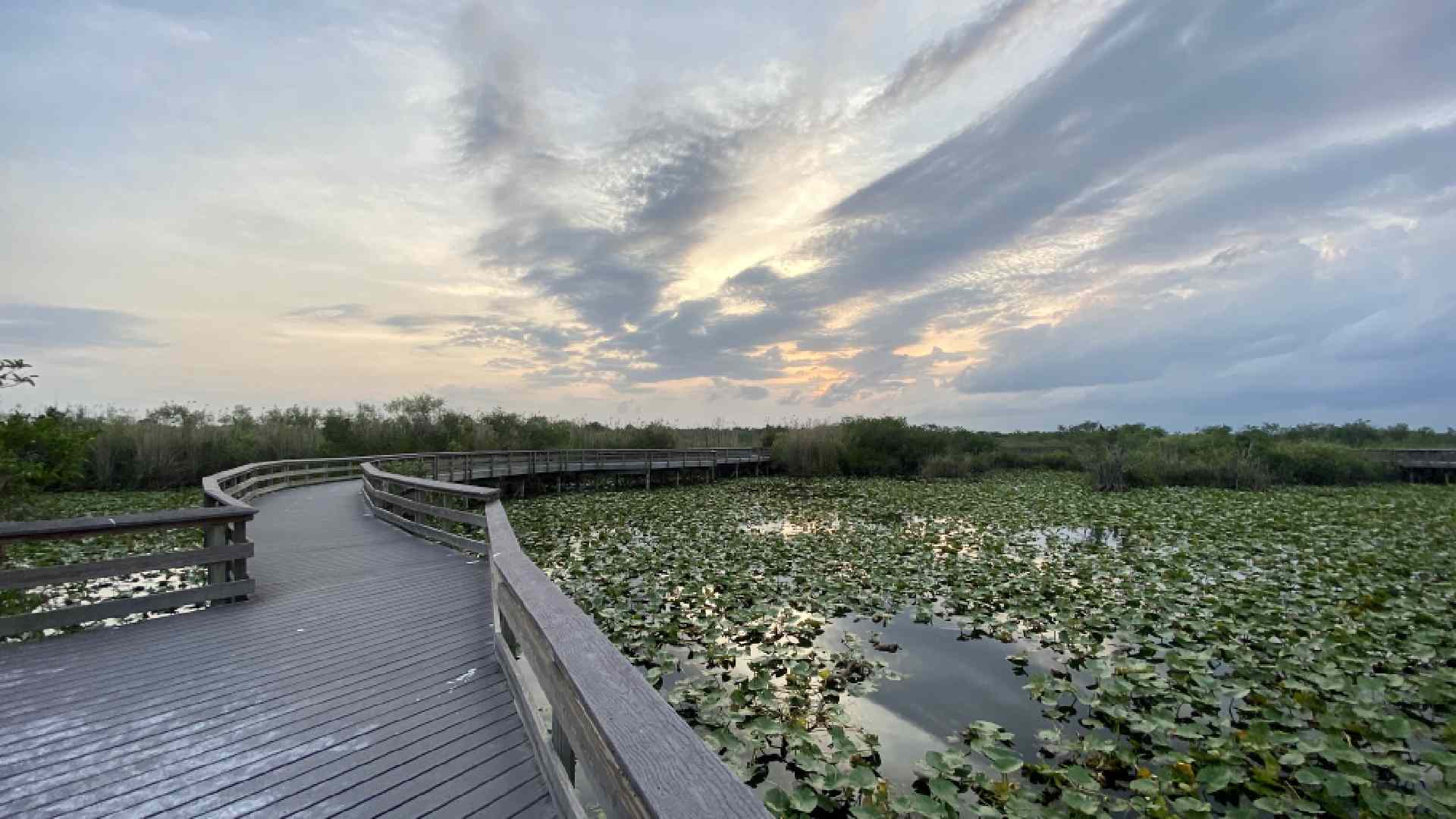
Everglades National Park, Florida:
Visitor Fee:
There is an entrance fee to visit Everglades National Park. As of the knowledge cutoff in September 2021, the entrance fee for a private vehicle is $30 for a seven-day pass. For pedestrians, cyclists, and motorcyclists, the fee is $15 per person for a seven-day pass. There are also annual passes available for frequent visitors.
Transportation:
Visitors can reach Everglades National Park using various means of transportation:
- Car: The park is accessible by car via several entrances, including the Ernest F. Coe Visitor Center near Homestead, the Shark Valley Visitor Center near Miami, and the Gulf Coast Visitor Center near Everglades City. The main park road, Tamiami Trail (U.S. Route 41), provides access to various areas of the park.
- Public Transportation: Limited public transportation options are available to access the park. Private tour companies may offer transportation from major cities in Florida, such as Miami and Fort Lauderdale, to designated areas within the park.
- Bicycle: Some areas of the park can be explored by bicycle. Visitors can bring their own bicycles or rent them from nearby rental shops.
Things to Do:
- Wildlife Viewing: Everglades National Park is renowned for its abundant wildlife. Visitors can observe a variety of species, including alligators, crocodiles, manatees, dolphins, birds, turtles, and snakes. The park is a birdwatcher’s paradise, with over 350 species of birds.
- Airboat Tours: Take an exhilarating airboat tour through the park’s wetlands, gliding over the water and marshes while learning about the unique ecosystem and spotting wildlife.
- Canoeing and Kayaking: Explore the park’s waterways by canoe or kayak, immersing yourself in the serene and picturesque landscapes. Paddling trails are available, allowing visitors to navigate through mangrove forests and freshwater marshes.
- Hiking and Nature Trails: Discover the park’s diverse ecosystems on foot by hiking along nature trails. Some popular trails include the Anhinga Trail, Gumbo Limbo Trail, and Shark Valley Loop Trail, each offering unique experiences and opportunities for wildlife sightings.
- Ranger Programs: Attend ranger-led programs and guided walks to learn about the park’s flora, fauna, and cultural history. These programs provide insights into the unique challenges and conservation efforts of the Everglades.
List of Activities:
- Boat Tours: Join guided boat tours to explore the park’s waterways, such as the Ten Thousand Islands area or the mangrove estuaries, to witness the beauty and diversity of the ecosystem.
- Camping: Everglades National Park offers various camping options, including front-country and backcountry camping. Enjoy a night under the stars and experience the sounds and sights of the park after dark.
- Fishing: With proper permits and licenses, visitors can enjoy fishing in designated areas of the park, which offer opportunities to catch various freshwater and saltwater fish species.
- Birdwatching: Bring binoculars and observe the park’s numerous bird species. Birdwatching can be done along trails, from observation decks, or during boat tours.
- Photography: Capture the stunning landscapes, wildlife, and unique features of the Everglades through photography. Sunrise and sunset lighting often provide beautiful opportunities for photos.

Why People Enjoy Coming Here: People enjoy visiting Everglades National Park for several reasons:
- Biodiversity and Wildlife: The park is home to a vast array of plants and animals, many of which are found nowhere else in the United States. Visitors come to experience the rich biodiversity and see iconic species like alligators and wading birds.
- Unique Ecosystem: The Everglades is one of the largest subtropical wetlands in the world, characterized by its slow-moving water, sawgrass marshes, mangrove forests, and cypress swamps. People enjoy exploring this unique and fragile ecosystem.
- Outdoor Recreation: The park offers numerous recreational activities, including airboat tours, canoeing, kayaking, hiking, and camping. Visitors can immerse themselves in nature and enjoy the tranquility of the wilderness.
- Educational Experience: Everglades National Park provides educational opportunities to learn about wetland ecosystems, conservation, and the challenges facing this fragile environment. Ranger programs and exhibits offer insights into the park’s natural and cultural history.
- Scenic Beauty: The Everglades’ expansive landscapes, dramatic sunsets, and diverse flora create a picturesque setting that attracts nature lovers, photographers, and those seeking a peaceful retreat.
Age of the Place:
Everglades National Park was established on December 6, 1947, making it over 73 years old as of the knowledge cutoff in September 2021.
Additional Nearby Attractions:
- Biscayne National Park: Located nearby, Biscayne National Park protects a diverse marine ecosystem. Visitors can explore its coral reefs, go snorkeling or diving, and take boat tours to see the park’s islands and wildlife.
- Big Cypress National Preserve: Adjacent to Everglades National Park, Big Cypress National Preserve offers similar natural beauty and recreational opportunities, including hiking, camping, and wildlife viewing.
- Shark Valley: Located within Everglades National Park, Shark Valley offers a 15-mile (24 km) loop road that can be explored by bicycle or tram. Visitors can observe wildlife and enjoy panoramic views of the Everglades.
- Miccosukee Indian Village: Learn about the culture and traditions of the Miccosukee Tribe through exhibits, demonstrations, and guided tours at the Miccosukee Indian Village near the park.
- Florida Keys: The Florida Keys, including Key Largo and Key West, are within driving distance of Everglades National Park. Visitors can explore these tropical islands, go snorkeling or diving, and experience the laid-back island lifestyle.